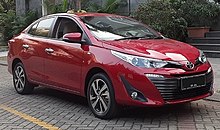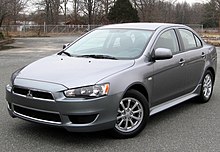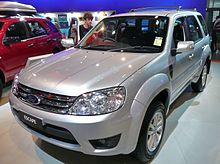




The automotive industry in the Philippines is one of the largest in the Asia-Pacific region, with approximately 441.4 thousand vehicles sold in 2023.[1][2] Most of the vehicles sold and built in the Philippines are from foreign brands. For the most part, the Philippines is dominated by Japanese automobile manufacturers like most of its ASEAN neighbors.[3] The automobile production in the country is covered under the Philippine Motor Vehicle Development Program implemented by the Board of Investments.[4] In addition, there are also a small number of independent firms who assemble and fabricate jeepneys and other similar vehicles, using surplus engines and drivetrain parts mostly from Japan.
The Philippine automobile industry consists of two sectors: motor vehicle assembly and vehicle parts and components manufacturing. The country also has an active premium car market and commercial vehicle segment.
Automobile sales in the Philippines mostly consist of locally assembled and imported cars, notably coming from Thailand, Indonesia, and from other countries. In 2019, an imported vehicle coming from Indonesia costed 24 percent lower than a locally made equivalent. The same cost difference applies to completely built-up cars from South Korea (also 24 percent) and Thailand, with 18 percent.[5] The country also imports cars from China, India, and the United States.
- ^ cycles, This text provides general information Statista assumes no liability for the information given being complete or correct due to varying update; Text, Statistics Can Display More up-to-Date Data Than Referenced in the. "Topic: Automotive industry in the Philippines". Statista.
- ^ Co, Brent. "Philippine Auto Sales 2023: 441,408 vehicles sold, 18.93% growth". AutoIndustriya.com. Retrieved January 24, 2024.
- ^ "The Philippine Motor Vehicle Industry (Automotive, Parts and Motorcycle Industries)" (PDF). Republic of the Philippines Board of Investments. July 3, 2017.
- ^ "Automotive".
- ^ "Philippines: cost difference of CBU vehicles compared to locally produced cars, by source country". Statista.
© MMXXIII Rich X Search. We shall prevail. All rights reserved. Rich X Search
